In Arabic script, each letter can change shape depending on its position in a word. However, not all letters connect in the same way. The arabic letter zaal (ذ) is one of the few letters that do not connect to the letter after it, giving it a consistent and simple shape. In this lesson, we will explore the different positions of arabic letter zaal in Arabic words and how to recognize and write it correctly.
Arabic Letter Zaal in All Word Positions
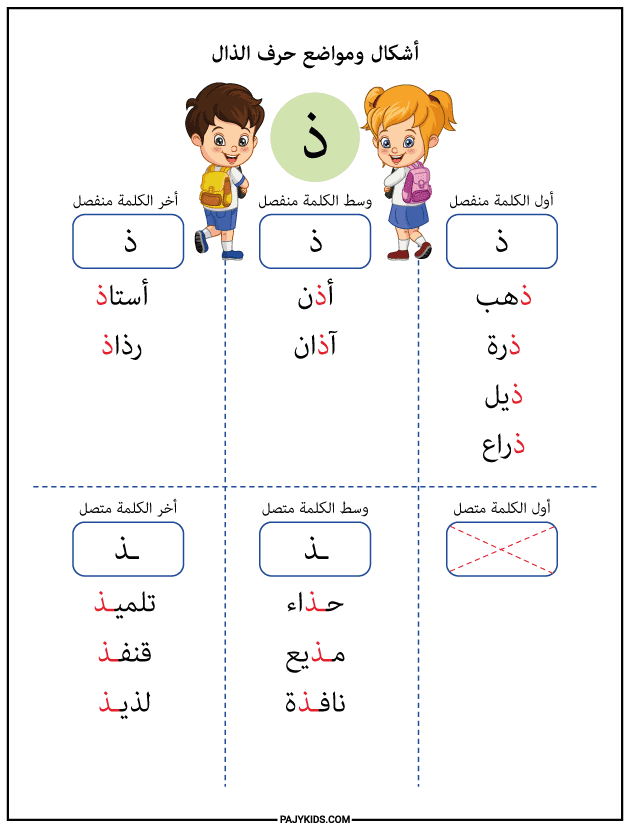
- Arabic Letter Zaal at the Beginning of a Word
When the arabic letter zaal appears at the beginning of a word, it maintains its standalone shape: ذ. Since it does not connect to the following letter, it is always written separately. Examples include: ذئب (theeb – wolf), ذهب (dhahab – gold), ذراع (dhiraa’ – arm). This unique feature makes the initial form easy to identify, even for beginners.
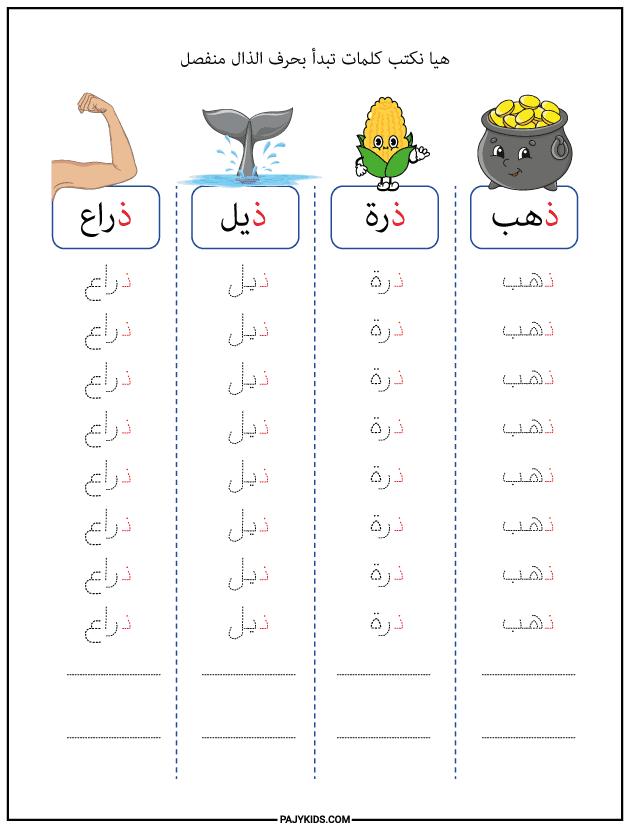
- Arabic Letter Zaal in the Middle of a Word
In the middle of a word, arabic letter zaal still does not connect to the letter after it. Instead, it connects only to the letter before it, appearing like this: ـذ. Some examples are: حذاء (hezaa- Shoe), نافذة (nafeza – Window). Recognizing this break in connection helps learners spot arabic letter zaal more easily in longer words.
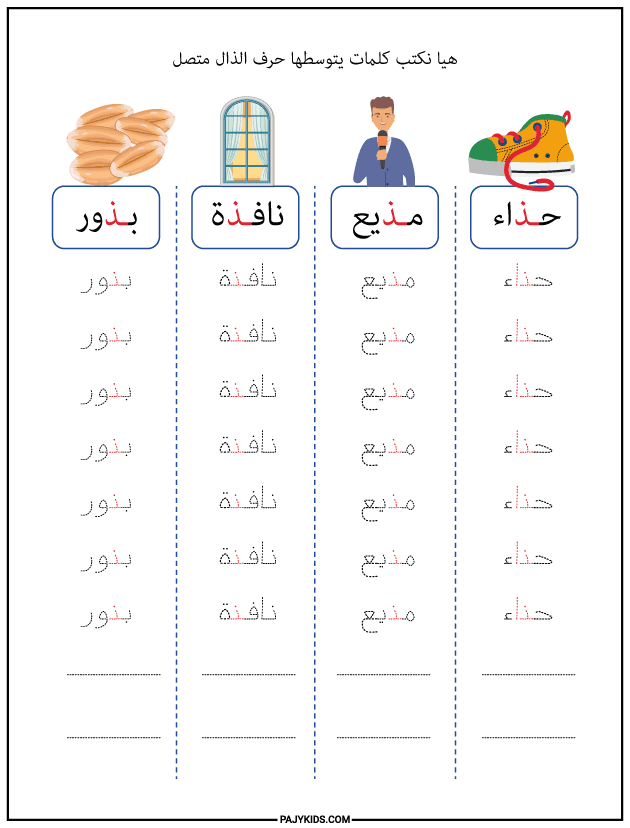
- The letter “za’al” in the middle of a word (separated)
In the middle of a word, the letter “dhal” sometimes appears separated, taking its natural form: “dh.” Examples include: “adhan” (a’dhan), “idhhan” (a’dhan). Recognizing this connection helps learners more easily distinguish the letter “za’al” in long words.
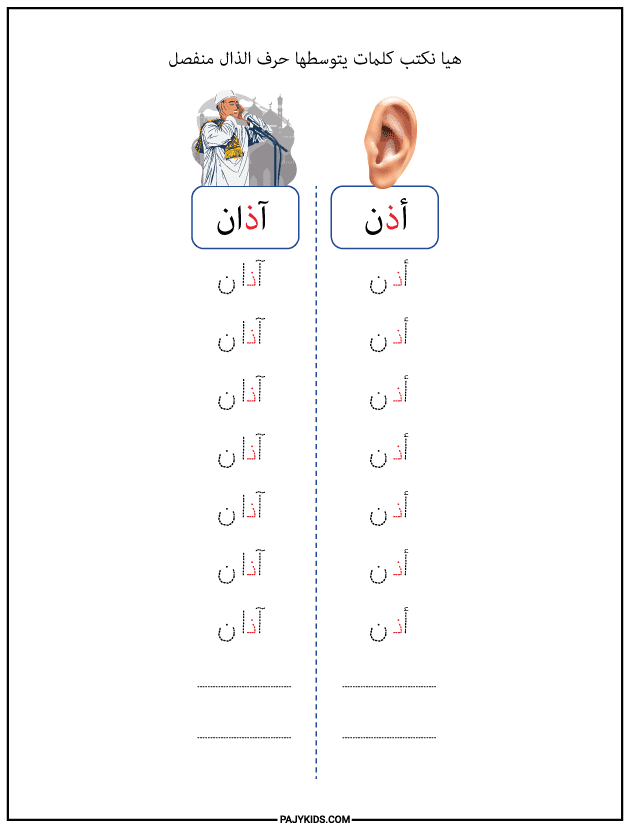
- Arabic Letter Zaal at the End (Connected Form)
When zaal appears at the end of a word and is preceded by a connecting letter, it looks like this: ـذ. Words like تلميذ (telmeez – student) or قنفذ (qunfez – urchin) show this form clearly. It connects from the right side but never to the left, which is a unique trait in Arabic writing.
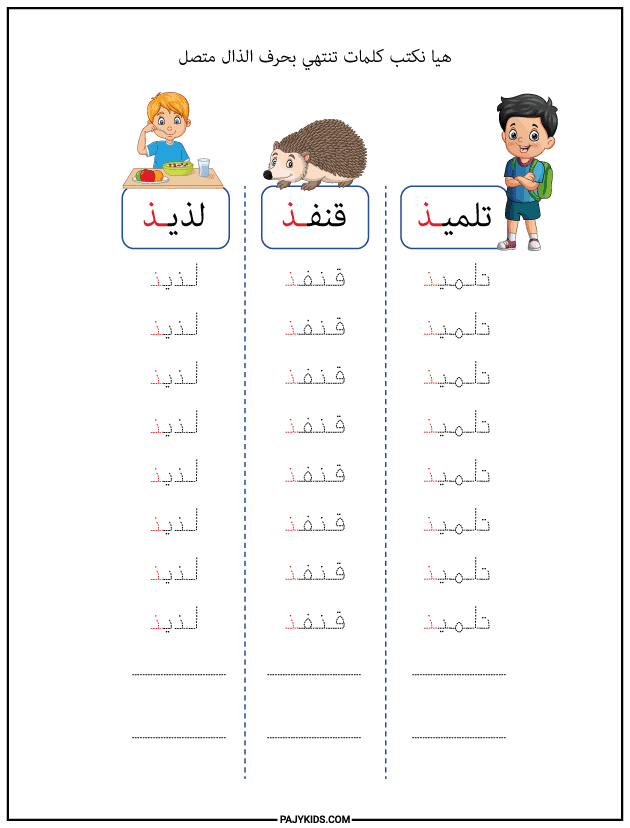
- Arabic Letter Zaal at the End (Isolated Form)
If the arabic letter zal comes after a non-connecting letter, it appears isolated at the end: ذ. Examples include: أستاذ (Professor), رذاذ (Spray). This form is identical to its initial shape, making it easy for learners to recognize and write.
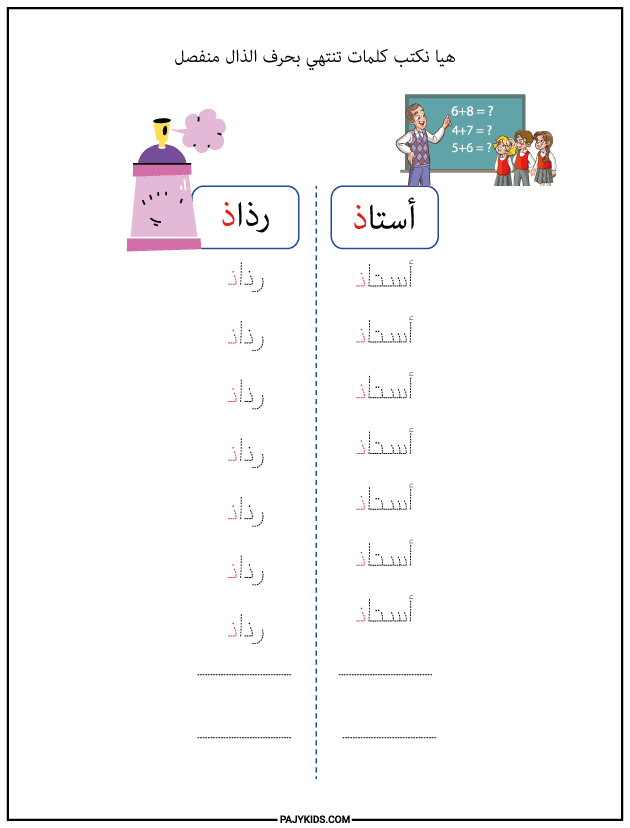
The letter zaal closely resembles dal (د) but with a single dot above it. Students often confuse the two, so it’s important to practice comparing them using flashcards or writing exercises. Clear visual differentiation builds stronger writing skills and spelling accuracy.